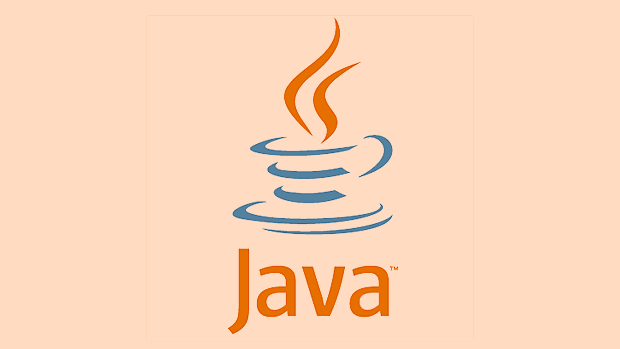The key to using Java Profiler is to understand its functionality and follow the steps. 1. Start the tool and connect to the target application. JVisualVM can directly run and automatically identify local processes. JProfiler needs to be installed and supports remote connections. 2. Analyze CPU and memory. JProfiler provides "Call Tree" and "Hot Spots". JVisualVM samples CPUs through "Sampler", and both can view memory trends and object allocations. 3. Locate thread problems. JVisualVM view state changes through "Threads" tag. JProfiler can detect deadlocks and display resource waiting conditions. 4. Combined with the external environment troubleshooting problems, view GC logs and application logs, and use JVM parameters to assist in analyzing performance bottlenecks.

The key to using Java Profilers such as JVisualVM or JProfiler is to understand their functional positioning and operational processes. Both types of tools can help you analyze application performance issues, but the focus is slightly different: JVisualVM is a free tool built into JDK, suitable for basic monitoring; while JProfiler has more comprehensive functions, suitable for in-depth diagnosis of performance bottlenecks.

1. Start and connect to the target application
No matter which tool it is, the first step is to start and connect to the Java application you want to analyze.
- JVisualVM : The way to open is very simple. Enter the bin directory of the JDK and run
jvisualvm. It will automatically list the local running Java processes and click to select to connect. - JProfiler : It needs to be installed separately. After the installation is completed, select "Remote Integration" through the GUI interface or directly attach to the local process.
Note: If it is an application on a remote server, some configuration is required to connect, such as turning on JMX or adding agent parameters. This process is common in production environments, but it is necessary to ensure that the firewall allows communication to the relevant ports.

2. Analyze CPU and memory usage
Once the connection is successful, you can start to view the application's running status.
-
CPU Analysis :

- In JProfiler, you can select "CPU Views", then select "Call Tree" or "Hot Spots" to quickly find the method that takes up the most CPU time.
- JVisualVM needs to first click the "Sampler" tab, then enable CPU sampling, and then run for a period of time before stopping viewing the results.
-
Memory analysis :
- It mainly depends on the use trend of heap memory, whether there is frequent GC, and whether object creation is reasonable.
- JProfiler provides the "Allocation Hot Spots" function, which can directly see which classes are constantly generating new objects.
- JVisualVM can switch to the "Monitor" tab to view the heap memory usage, or do memory sampling to see the current distribution of surviving objects.
Suggestion: If you find that a certain method is called in a particularly large number, or some classes are instantiated very frequently, it may be the entry point for performance optimization.
3. Locate thread issues and deadlocks
Common threading problems in Java applications, such as deadlock, blocking, insufficient thread pool, etc.
- JVisualVM : Click the "Threads" tab to see the thread state change diagram. If the thread is in BLOCKED state for a long time, you can click "Thread Dump" to view the details.
- JProfiler : There is a dedicated "Threads/Thread Status" view, which can also detect potential deadlocks and show the situation where threads are waiting for resources.
Tips: When you suspect a deadlock, you can directly send a thread dump (thread dump) and then search the keyword "deadlock" in the tool.
4. Cooperate with the external environment to check
Many times, performance problems are not problems with the code itself, but are caused by factors such as slow database, network latency, and unreasonable GC settings.
- View GC situation: You can see the frequency and time-consuming of Full GC in both tools. If Full GC is frequently used, it means that there may be a problem with the memory setting.
- Combined with logs: Although profiler can provide a lot of information, sometimes it is necessary to cooperate with the application log to confirm which section of logic is wrong.
- Use JVM parameter assistance: For example, add
-XX: PrintGCDetailsto output GC logs to help determine whether GC is the bottleneck.
Basically that's it. By mastering these commonly used functions, most common performance problems can be located. Not complicated, but it is easy to ignore details.
The above is the detailed content of How to use a Java profiler like JVisualVM or JProfiler?. For more information, please follow other related articles on the PHP Chinese website!

Hot AI Tools

Undress AI Tool
Undress images for free

Undresser.AI Undress
AI-powered app for creating realistic nude photos

AI Clothes Remover
Online AI tool for removing clothes from photos.

Clothoff.io
AI clothes remover

Video Face Swap
Swap faces in any video effortlessly with our completely free AI face swap tool!

Hot Article

Hot Tools

Notepad++7.3.1
Easy-to-use and free code editor

SublimeText3 Chinese version
Chinese version, very easy to use

Zend Studio 13.0.1
Powerful PHP integrated development environment

Dreamweaver CS6
Visual web development tools

SublimeText3 Mac version
God-level code editing software (SublimeText3)

Hot Topics
 Difference between HashMap and Hashtable?
Jun 24, 2025 pm 09:41 PM
Difference between HashMap and Hashtable?
Jun 24, 2025 pm 09:41 PM
The difference between HashMap and Hashtable is mainly reflected in thread safety, null value support and performance. 1. In terms of thread safety, Hashtable is thread-safe, and its methods are mostly synchronous methods, while HashMap does not perform synchronization processing, which is not thread-safe; 2. In terms of null value support, HashMap allows one null key and multiple null values, while Hashtable does not allow null keys or values, otherwise a NullPointerException will be thrown; 3. In terms of performance, HashMap is more efficient because there is no synchronization mechanism, and Hashtable has a low locking performance for each operation. It is recommended to use ConcurrentHashMap instead.
 Why do we need wrapper classes?
Jun 28, 2025 am 01:01 AM
Why do we need wrapper classes?
Jun 28, 2025 am 01:01 AM
Java uses wrapper classes because basic data types cannot directly participate in object-oriented operations, and object forms are often required in actual needs; 1. Collection classes can only store objects, such as Lists use automatic boxing to store numerical values; 2. Generics do not support basic types, and packaging classes must be used as type parameters; 3. Packaging classes can represent null values ??to distinguish unset or missing data; 4. Packaging classes provide practical methods such as string conversion to facilitate data parsing and processing, so in scenarios where these characteristics are needed, packaging classes are indispensable.
 How does JIT compiler optimize code?
Jun 24, 2025 pm 10:45 PM
How does JIT compiler optimize code?
Jun 24, 2025 pm 10:45 PM
The JIT compiler optimizes code through four methods: method inline, hot spot detection and compilation, type speculation and devirtualization, and redundant operation elimination. 1. Method inline reduces call overhead and inserts frequently called small methods directly into the call; 2. Hot spot detection and high-frequency code execution and centrally optimize it to save resources; 3. Type speculation collects runtime type information to achieve devirtualization calls, improving efficiency; 4. Redundant operations eliminate useless calculations and inspections based on operational data deletion, enhancing performance.
 What are static methods in interfaces?
Jun 24, 2025 pm 10:57 PM
What are static methods in interfaces?
Jun 24, 2025 pm 10:57 PM
StaticmethodsininterfaceswereintroducedinJava8toallowutilityfunctionswithintheinterfaceitself.BeforeJava8,suchfunctionsrequiredseparatehelperclasses,leadingtodisorganizedcode.Now,staticmethodsprovidethreekeybenefits:1)theyenableutilitymethodsdirectly
 What is an instance initializer block?
Jun 25, 2025 pm 12:21 PM
What is an instance initializer block?
Jun 25, 2025 pm 12:21 PM
Instance initialization blocks are used in Java to run initialization logic when creating objects, which are executed before the constructor. It is suitable for scenarios where multiple constructors share initialization code, complex field initialization, or anonymous class initialization scenarios. Unlike static initialization blocks, it is executed every time it is instantiated, while static initialization blocks only run once when the class is loaded.
 What is the Factory pattern?
Jun 24, 2025 pm 11:29 PM
What is the Factory pattern?
Jun 24, 2025 pm 11:29 PM
Factory mode is used to encapsulate object creation logic, making the code more flexible, easy to maintain, and loosely coupled. The core answer is: by centrally managing object creation logic, hiding implementation details, and supporting the creation of multiple related objects. The specific description is as follows: the factory mode handes object creation to a special factory class or method for processing, avoiding the use of newClass() directly; it is suitable for scenarios where multiple types of related objects are created, creation logic may change, and implementation details need to be hidden; for example, in the payment processor, Stripe, PayPal and other instances are created through factories; its implementation includes the object returned by the factory class based on input parameters, and all objects realize a common interface; common variants include simple factories, factory methods and abstract factories, which are suitable for different complexities.
 What is the `final` keyword for variables?
Jun 24, 2025 pm 07:29 PM
What is the `final` keyword for variables?
Jun 24, 2025 pm 07:29 PM
InJava,thefinalkeywordpreventsavariable’svaluefrombeingchangedafterassignment,butitsbehaviordiffersforprimitivesandobjectreferences.Forprimitivevariables,finalmakesthevalueconstant,asinfinalintMAX_SPEED=100;wherereassignmentcausesanerror.Forobjectref
 What is type casting?
Jun 24, 2025 pm 11:09 PM
What is type casting?
Jun 24, 2025 pm 11:09 PM
There are two types of conversion: implicit and explicit. 1. Implicit conversion occurs automatically, such as converting int to double; 2. Explicit conversion requires manual operation, such as using (int)myDouble. A case where type conversion is required includes processing user input, mathematical operations, or passing different types of values ??between functions. Issues that need to be noted are: turning floating-point numbers into integers will truncate the fractional part, turning large types into small types may lead to data loss, and some languages ??do not allow direct conversion of specific types. A proper understanding of language conversion rules helps avoid errors.







